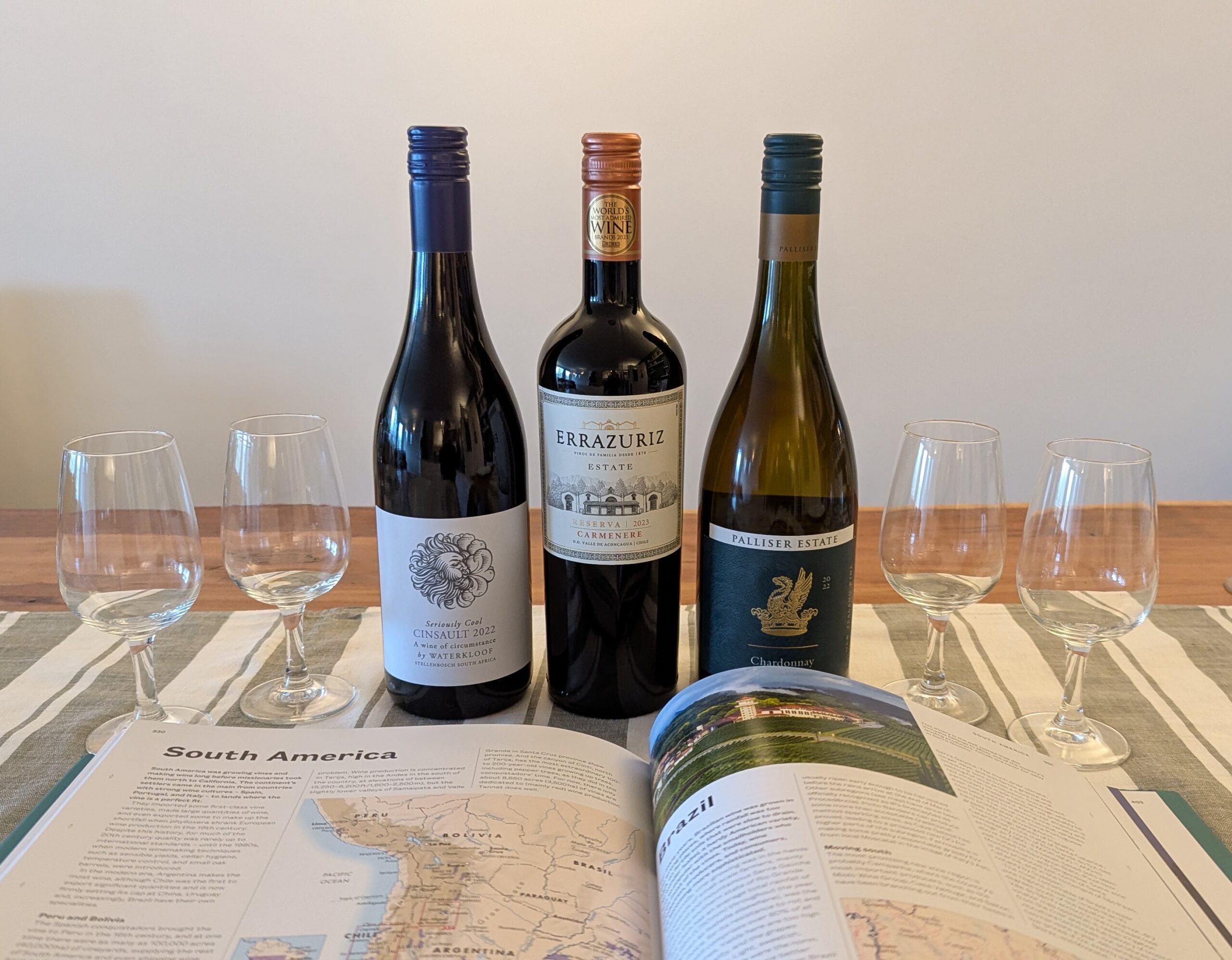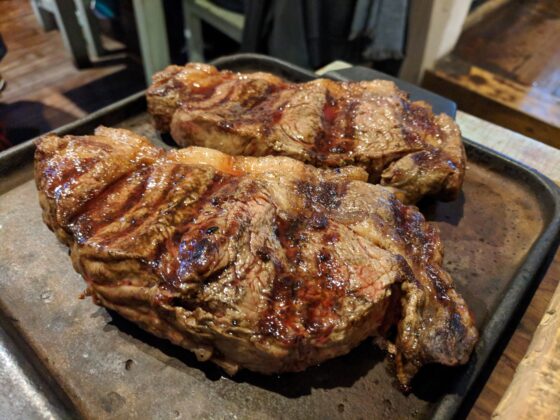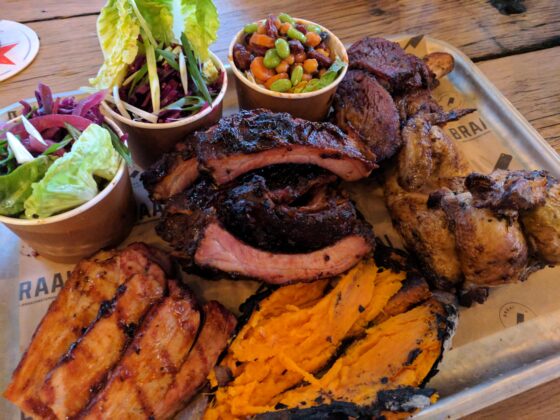Wine Watch: A timely taste of the southern hemisphere
Vicky Hampton
Each month, our resident wine expert, Vicky Hampton, selects her pick of wines that befit the season for those on a budget and those with a little more cash to splash. All featured wines are available here in the Netherlands from supermarkets, off-licence chains, local wine shops and online stores.
The beginning of March is slap bang in the middle of grape harvest in the southern hemisphere, which is why this month we’re heading south to explore the wine regions of South America, South Africa and Australasia.
What’s more, 2024 vintage wines from the southern hemisphere are likely arriving on the shelves of European wine shops by now. It’s useful to bear in mind when checking a wine’s vintage that the year on the bottle refers to when the grapes were harvested – not when the wine was bottled or released.
So a 2023 vintage from South Africa, for example, means the grapes were picked around two years ago, with the wine spending the intervening time maturing in barrel or bottle. Whereas a 2023 vintage from Europe would be about six months younger, since harvest takes place later in the year.
Old World versus New World
Traditionally, wine geography was divided into the “Old World” – meaning Europe – and the “New World,” which included the US as well as many of the southern hemisphere regions featured here. New World wines were once considered bigger, brasher and less elegant than their Old World counterparts. But in recent years, that perception has shifted dramatically. International competitions have repeatedly shown that even seasoned wine experts struggle to distinguish between Old and New World wines in blind tastings these days.
That said, certain grapes and styles have become closely associated with these southern hemisphere regions, and they’re worth adding to your repertoire. Take Carménère and Malbec, for example: both originated in France (from Bordeaux and Cahors respectively), but they’ve since become signature red varieties in South America, putting Chilean Carménère and Argentinian Malbec on the map.
The same goes for Sauvignon Blanc and Chenin Blanc. While these grapes are still important varieties in France’s Loire Valley, New Zealand has arguably made Sauvignon Blanc into a passionfruit-forward style all of its own, while South Africa has cornered the market in perfumed, viscous Chenin Blanc.
When it comes to food pairings, the obvious diversity of wines in the southern hemisphere means there are no hard and fast rules. However, the old adage “what grows together, goes together” can still serve as a useful guide.
Take Argentina, for example: while Argentinian steakhouses might be a cliché in the Netherlands, the country truly produces some of the world’s finest beef. And if you’re enjoying a perfectly cooked ribeye in Buenos Aires, there’s nothing better to drink with it than a bold, black-fruited, leather-and-tobacco-scented Malbec.

Similarly, in South Africa, the braai (barbecue) is central to the food culture: think boerewors (a coiled sausage spiced with coriander and cloves), lamb chops, chicken and so on – all cooked over an open wood or charcoal fire.
The quintessential braai wine has to be South Africa’s signature red, Pinotage: a crossing of Pinot Noir and Cinsault that’s gutsy and smoky. With its meaty, full-bodied texture, you can just imagine a glass of Pinotage being an ideal match for the sunshine, spice and smokiness of a South African braai.
Fear not, however – we’ll dive into more specific food pairing tips with my three recommended wine picks below. So let’s get started and head Down Under!
Best budget bottle: Errazuriz Estate Carménère Reserva, Aconcagua Valley, Chile, 2023 (€9.99)
Full-bodied, rich and meaty, this is a red wine that would pair perfectly with a Sunday roast beef, American-style brisket, or perhaps (given its Chilean provenance) a plate of lomo a lo pobre – steak with fried egg, onions and potatoes.
Although a bottle of the Errazuriz Estate Carménère Reserva is just shy of ten euros, its price belies some impressive complexity: jammy blackberries, spicy black pepper and cloves, sweet vanilla and liquorice, toasty cedar and smoke (thanks to spending several months in oak barrels), plus a meaty, tarry, leathery quality. Available from Gall & Gall at stores nationwide.
Magnificent mid-range: Waterkloof Seriously Cool Cinsault, Stellenbosch, South Africa, 2022 (€13.95)
Seriously cool, not because it’s on trend (although it’s that, too), but because it comes from a cool-climate sub-region of the usually warm Stellenbosch. And these particular Cinsault grapes were grown on seriously old vines (dating back 50+ years) on the south-facing slopes overlooking False Bay (don’t forget that in South Africa, that means away from the sun!).

All of which results in a red wine that’s light in body but intense in flavour: perfumed with eucalyptus, fruity with red cherries, minty like an After Eight. I must admit I would struggle to know what to pair Waterkloof’s Cinsault with; but that’s ok – I’d enjoy a glass by itself, before or after dinner, preferably lightly chilled. Available from Bilderdijk Wijnhuys in Amsterdam West.
Something special: Palliser Chardonnay, Martinborough, New Zealand, 2022 (€19.95)
When it comes to white wines, most people would usually associate New Zealand with Sauvignon Blanc. But the country is shaking off its reputation for only producing ultra-aromatic Savvy B by embracing other grapes like Riesling, Pinot Gris and Chardonnay.
It’s the latter that I picked up for this article, as Palliser’s Chardonnay walks a really interesting line between the high-acidity style of a Chablis and the butter-rich style from southern Burgundy or California. Green apple, underripe pineapple and zesty minerality sit alongside coconut, sandalwood and smoke from fermentation in French oak.
This Martinborough Chardonnay would go well with anything involving a buttery sauce but with a lick of lemon. Fresh and full in equal measure. Available from Vindict (with two locations in Amsterdam – Noord and the Jordaan).
For more of Vicky’s wine recommendations and grape explorations, follow @TrufflesandTannins on Instagram or subscribe to The Wine Edit on Substack – she generally writes an “expansion pack” of her Wine Watch columns the week after publication, featuring more wines and food pairings!
Thank you for donating to DutchNews.nl.
We could not provide the Dutch News service, and keep it free of charge, without the generous support of our readers. Your donations allow us to report on issues you tell us matter, and provide you with a summary of the most important Dutch news each day.
Make a donation